
<
Serge77 - My Rocket Workshop >Consequence of Accidental Ignition
Experiment
Part 2
Summary: It was attempt to melt KNO3-sorbitol propellant and ignite it in hot liquid state. But before propellant melted REALLY ACCIDENTAL IGNITION occur.
Starting materials:
KNO3: reagent grade "pure for analysis". Moisture content 0.1-0.2%. It was milled with coffee mill, crystals measured 50 microns to 300 microns.
Sorbitol: pharmaceutical grade. Moisture content 0.2-0.3%. Granules measured 200 microns to 600 microns. There are also much smaller particles in the mixture.
Preparation
Experiment setup was the same as in the first test.
Four metal rods 1m height were placed at 1m distance from each other for the scale purposes.
Sheets of office paper were pinned on the ground at 0.5m distance from each other.
1 kg batch of thoroughly mixed powdered KNO3-sorbitol propellant mixture was placed in aluminum pan. Small charcoal barbeque grill was used as heat source, with salt bath and aluminum pan at the top.

Digital thermometers were used for measurement of temperature at the bottom of the bath and at the bottom of aluminum pan.
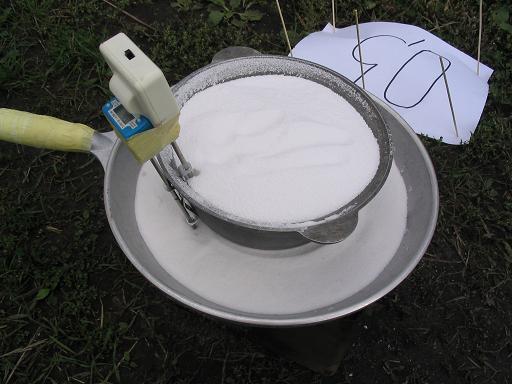
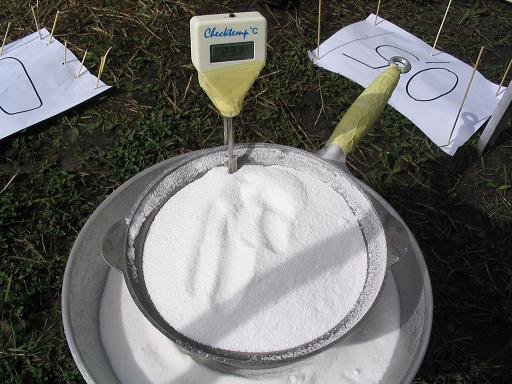
It took about an hour to heat bath to 160° C, after that temperature was stable at 160-170° C. Temperature of propellant at the bottom of aluminum pan reached 85° C. At this point sharp wind gust took out several sparks from the grill and one of them landed on the propellant at the middle of the surface. Ignition! Fire circle grew quickly and after 2-3 seconds all surface was in flame. Then 2-3 seconds burning was about the same, as in first experiment. Then burn rate suddenly increased, sound became more loud, fireball height became more than 1 m. Vigorous burning continued about 5 seconds, then 2-3 seconds of small fire from burning propellant residues and all was finished.
Unfortunately, video was not recorded at that time, so all timings are only approximations. But my companion and I are completely sure that burn time was much smaller, than at first experiment.
Consequences
The maximal scattering of burning propellant drops was the same, as in the first experiment: 1.5 m downwind, 0.5 m upwind, 1 m at other sides. But due to strong wind several small drops were found as far as 2.5-3 meters from the center. These drops didn't burn through the paper, so they were cold at landing time.
There are much less residue in the aluminum pan, than in the first experiment.
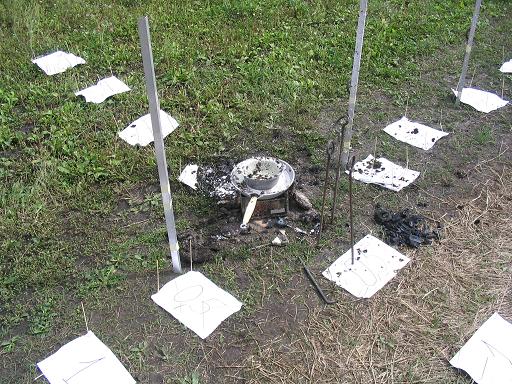

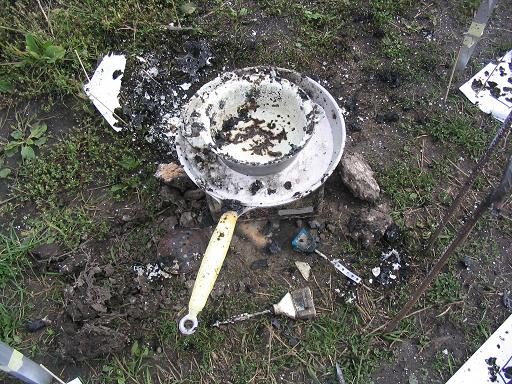
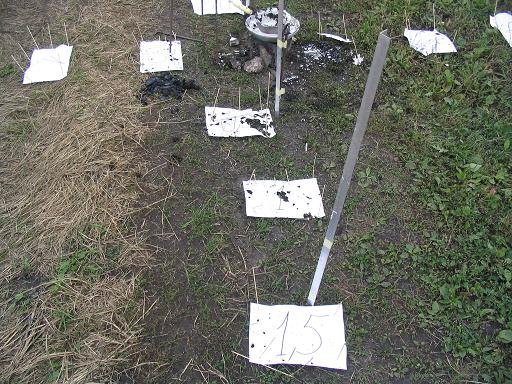
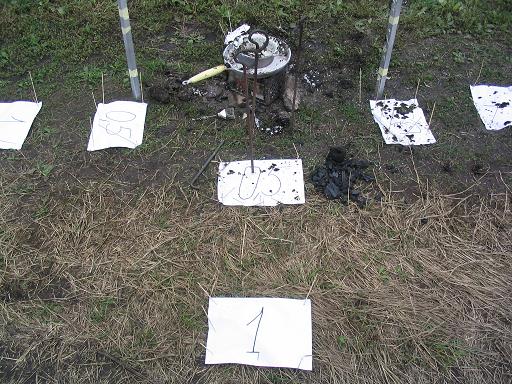
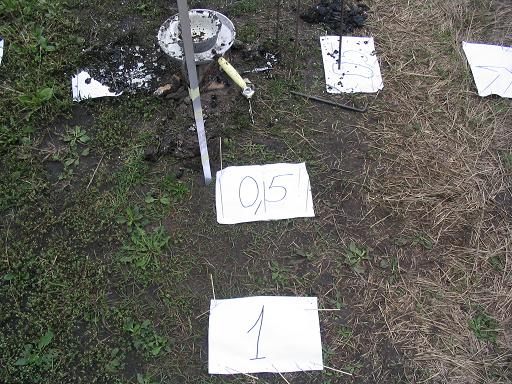

05.09.2006 Serge77